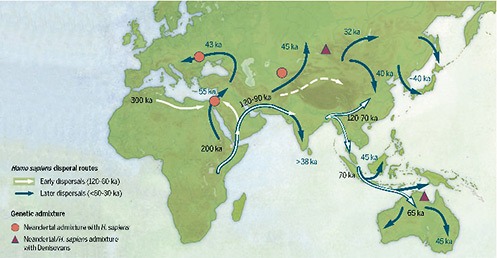A new study calls for a re-evaluation of our understanding of when and how humans left Africa and what happened once they arrived in Asia. The study by researchers from the University of Hawaiʻi at Mānoa and the Max Planck Institute for the Science of Human History was published in Science.
Most people are familiar with the traditional Out of Africa model that currently dominates the literature and textbooks. This model theorizes that modern humans evolved in Africa, then dispersed throughout the world in a single wave about 60,000 years ago. Today, technological advances and multidisciplinary research teams have uncovered new data that suggests the picture is much more complicated.
“We are finding that the picture to describe modern human origins is a great deal more complicated than traditionally believed. In fact, we are finding growing evidence that there were likely multiple dispersals out of Africa, some beginning by at least the advent of the Late Pleistocene some 120,000 years ago, and that these Homo sapiens interbred with other hominins, such as Neanderthals and Denisovans, across the globe. This complicates the history of our origins,” said study co-author Christopher J. Bae, professor of Anthropology in the College of Social Sciences at UH Mānoa.
Refined picture of human dispersal out of Africa
The study introduces an accumulation of evidence facilitated by growing interactions between scientists working in different regions of the Asian continent, a situation that has only begun changing over the past decade or so.

The result is a refined picture of human dispersal out of Africa. Recent studies have identified modern H. sapiens remains at multiple sites in China that have been dated to between 70,000 and 120,000 years ago. Additional finds indicate that modern humans reached Southeast Asia and Australia prior to 60,000 years ago.
While other recent studies do confirm that all non-African populations branched off from a single ancestral population in Africa approximately 60,000 years ago, this could indicate that there were multiple, smaller dispersals of humans out of Africa as early as 120,000 years ago, followed by a major dispersal 60,000 years ago.
The new study also sheds light on other evolutionary mysteries.
